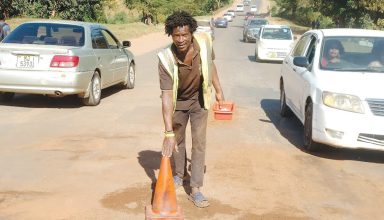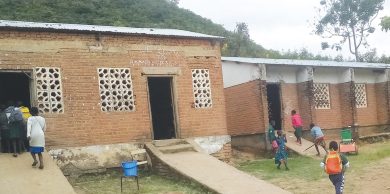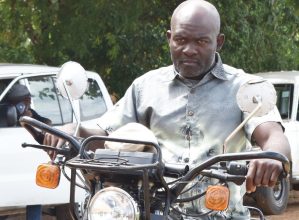Are cities without slums possible?

The failed World Bank urban housing project has left the country’s cities without any other large-scale government commitment to the cause of having cities without slums. Why did it fail and is there anything which can be done?
Experts are certain that, with government’s commitment, it is possible for Malawi to achieve the ‘city without a slum’ status. They underline that by upgrading informal settlements and providing soft loans for locals to build low-cost houses, Malawi can make it.
In fact, a 2010 United Nations Human Settlements Programme (UN-Habitat) publication shows that if Malawi can build 21 000 houses annually, the challenge of slums in its cities would be history as the case has been with countries like Zimbabwe and Brazil.
However, if recent indications are anything to go by, attempts to provide the urban poor with decent but low-cost social housing have generally failed.
A 1987 World Bank housing project which aimed at providing low-cost housing to low-income urban dwellers in Malawi provides an interesting case study. The bank released money through the Office of the President and Cabinet (OPC) to develop 2 000 plots in Lilongwe in Area 47 Gulliver and Kameza and Manja in Blantyre.
Malawi Housing Corporation (MHC) was then tasked to implement the first phase of the project, giving mortgages to prospective home owners through the New Building Society (now NBS Bank) using the full-recovery principle. Under this principle, those who bought the houses at $165, then, were expected to pay for them in instalments of up to 25 years. They were also required to extend the houses as part of the purchase agreement. The terms of the sale stipulated that those who did not fulfil the extension clause would lose them.
And many did, says urban development planner, Vera Tambala-Kamtukule, in a study of the World Bank housing project.
But despite that, Tambala-Kamtukule notes in the study that decades later, a single glance at the project shows that the poor people it was meant for are no longer living in low-income housing areas.
“The absence of property transfer limitations led to the sale of their houses to middle and high-income earners, which indicates that the objectives of the World Bank housing project were not met,” she writes.
But what was the underlying problem?
Tambala-Kamtukule notes that the ability of the target people to repay was not properly assessed. As a result, she said, most of them failed to repay within the appropriate conditions.
Furthermore, the project faced resistance.
Manuel Fernandez and Charles Azizi, Polytechnic architecture graduates, noted in their dissertation in 2011 that the project faced resistance from some landlords in the townships.
“People who owned, say five slum houses and were renting them out, were the most resistant to the project, because it meant they would lose their houses in place of one decent, low cost structure,” Fernandez says.
The failure of the World Bank’s project, arguably, left the urban poor without a helping hand.
“It is not just in housing,” says Patricia Kainga-Nangozo, a Member of Parliament for Zomba Central Constituency, popularly known as Nangozo.
The MP has been vocal in Parliament over the need for government to commit to addressing urban poverty.
“All we hear about these days is rural poverty. What we have forgotten is that urban poverty is growing and it is biting.
“The urban poor are left to fend for themselves. There is little support from government. The urban window of the Local Development Fund (LDF) is very little. I want it raised. It can help the urban poor,” Nangozo says.
With government’s apparent ignorance of the urban poor as it focuses on the rural poor, how can those who occupy the lower rungs of the social ladder in urban areas lay hands on money to put a roof over their heads?
The answer lies in community financing, according to executive director for Centre for Community Organisation for Development (Ccode) Siku Nkhoma and other housing experts Mtafu Manda and Diana Mitlin.
In a 2011 report entitled Understanding Pro-Poor Finance in Malawi, the three argue that group loans in organised communities have the advantage of replacing collateral among people who own very little. Peer pressure within community savings groups plays a big role in guaranteeing that their members pay up when they borrow, the experts say.
This is the principle behind the housing finance intervention initiated by Malawi Homeless Peoples Federation (MHPF) when it was formed in 2003 with support from Ccode.
By December 2010, the MHPF had acquired plots for over 3 000 of its members in urban areas, eight years after it procured the first set of 222 plots for 50 women in Mtandire Township in Lilongwe from the city council, says Nkhoma.
In Blantyre, government provided land for 222 plots through the city council, and for 80 plots in Mzuzu. MHPF says its target is for over 3 600 plots for about 18 000 urban poor families living in deplorable, uninhabitable slum-like conditions.
All in all, the number of poor people able to access plots for houses has been growing steadily, which is a good sign that a category of citizens who had no hope of getting land and money to build houses they can afford now have the chance to.
However, such projects are mostly implemented in virgin lands. Slums such as Mbayani in Blantyre and Zolozolo in Mzuzu are not a part of this development. So, should these slums be left in their state?
Fernandez and Azizi, undertook their study n Blantyre’s Nthukwa location, a fast-growing unplanned and informal settlement of over 60 000 people with virtually no social amenities perched precariously on a hill.
“The way the houses are built makes it very difficult to create space for amenities. If fire broke out in Nthukwa, it would be impossible for fire engines to gain access. There is no reliable piped water supply to the houses, no provision for sanitation, drainage and regular solid waste collection. The people there have little or no legal protection against eviction from landlords or city council officials, no rule of law and no police protection against crime,” notes Fernandez.
But despite the social and infrastructural problems that plague Nthukwa as well as other slum areas, Azizi maintains that it is still possible to build normal houses that are not only responsive to the terrain but comfortable enough for their inhabitants, no matter how poor they may be.
Based on their research of the area, the socio-economic profile of its inhabitants as well as the topology, the two conclude that it is possible to build low-cost houses which use, among other things, soil as well as rocks from the hill on which the township is located.





